2,000-year-old coin stash discovered at ancient Buddhist shrine in Pakistan
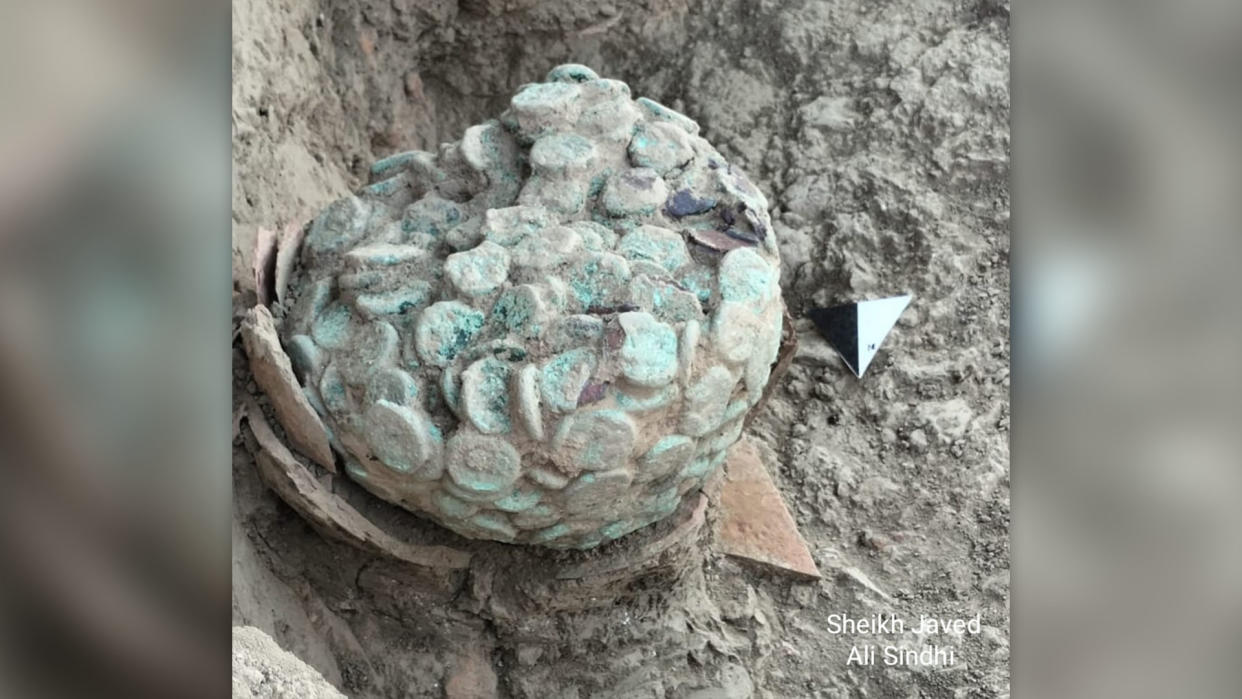
Archaeologists in Pakistan have unearthed an extremely rare hoard of copper coins, thought to be more than 2,000 years old, from the ruins of a Buddhist shrine built at the even more ancient site of Mohenjo-Daro.
The coins and shrine — known as a stupa — are thought to date from the time of the Kushan Empire, a mainly Buddhist polity that ruled the region from about the second century B.C. until the third century A.D., and conquered the Greco-Bactrian kingdom established in Central Asia by Alexander the Great.
The shrine sits among the vast ruins at Mohenjo-Daro in what is now southeast Pakistan, which date to around 2600 B.C. and are from the ancient Indus Valley or Harappan civilization — one of the oldest civilizations in the world.
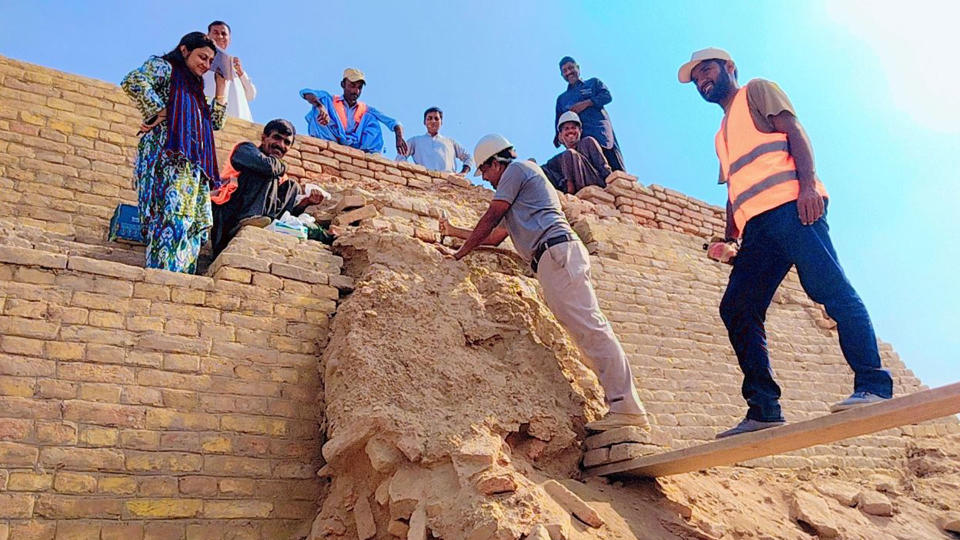
"The stupa was built on the top of deserted ruins of Mohenjo-Daro after its decline [around] 1,600 years later," archaeologist and guide Sheikh Javed Ali Sindhi told Live Science.
Sindhi was part of the team that unearthed the coin hoard at Mohenjo-Daro earlier this month during a salvage excavation at the site when a wall collapsed. The work was led by Syed Shakir Shah, who is the director of archaeology at the Mohenjo Daro site.
The coins will now be carefully cleaned at an archaeological laboratory, Sindhi said.
Kushan coins
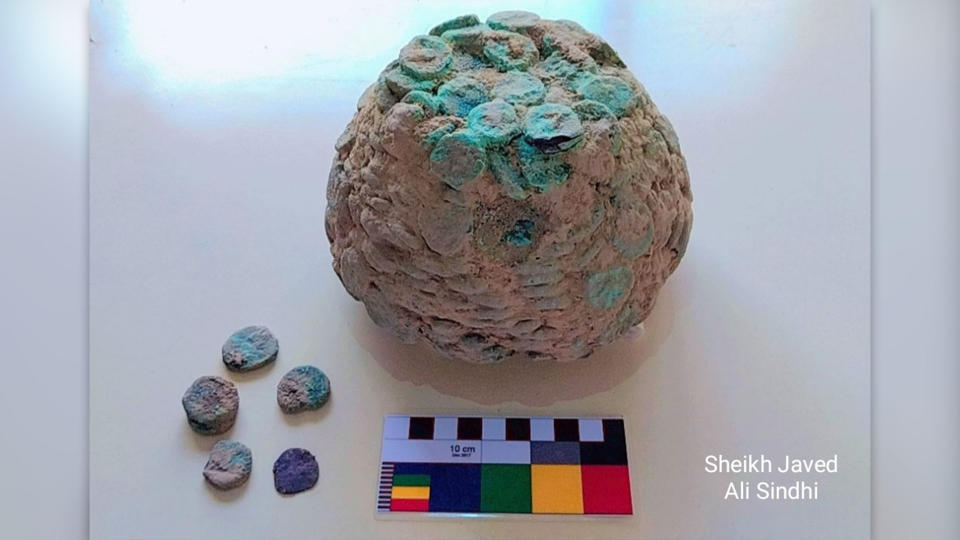
The newfound coins are colored green because copper corrodes when exposed to air. Centuries of corrosion have also fused the coins into a single lump that weighs about 12 pounds (5.5 kilograms).
But a few coins have been found separately. The fused hoard probably consisted of between 1,000 and 1,500 individual coins, Sindhi said.
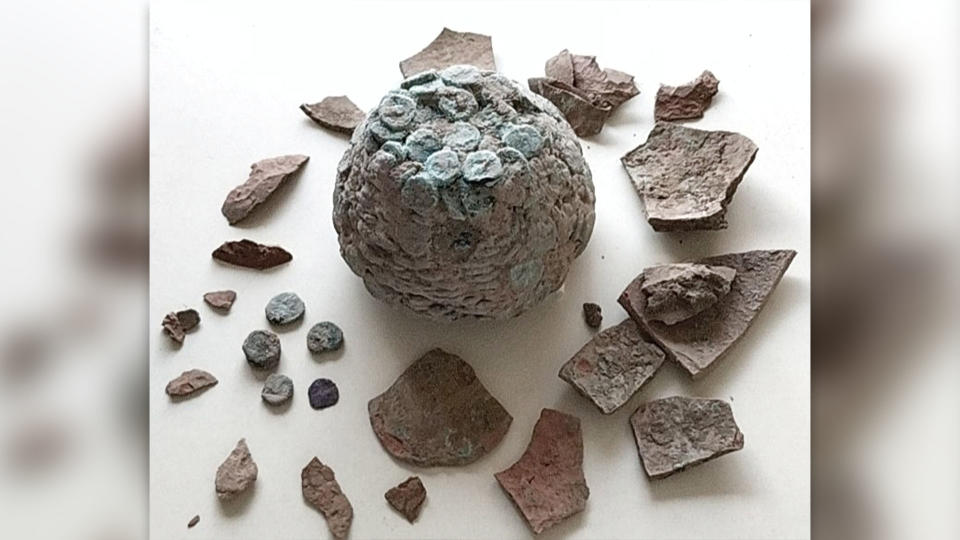
Some of the outer coins of the fused hoard depict a standing figure, which the researchers think is probably a depiction of a Kushan king, he said.
The coins are the first artifacts unearthed at the stupa's ruins since 1931, when British archaeologist Ernest MacKay unearthed more than 1,000 copper coins there, Sindhi said. Other coins were discovered at the stupa in the 1920s.
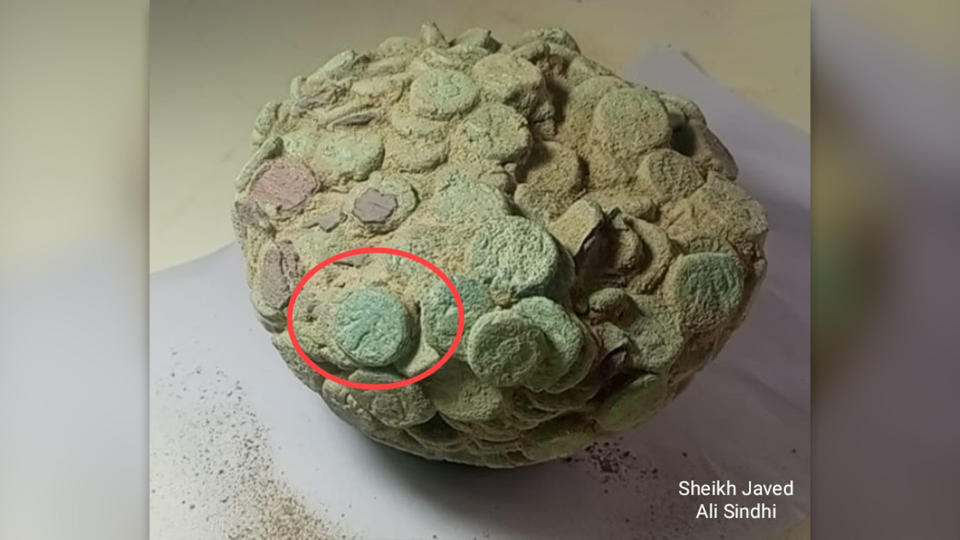
These earlier discoveries feature similar depictions of a standing figure on one side, while the other side sometimes depicts the Hindu god Shiva — Buddhism originated in Hindu beliefs — and other symbols, Sindhi said.
Buddhist stupa
Mohenjo-Daro — its name may mean "mound of the dead" in the local Sindhi language — was abandoned by about 1800 B.C., along with other larger cities of the ancient Indus Valley Civilization.
Researchers now think the Harappan cities were established too far from the floodplains of the Indus River to survive in a drying climate, which led people to abandon them for smaller settlements in the Himalayan foothills.
In about A.D. 150, the kings of the Kushan Empire are thought to have ordered the construction of the Buddhist stupa at Mohenjo-Daro. By that time the underlying ruins of the ancient city were almost 2,000 years old, but it's not known how much of the ancient site would have been visible at that time.
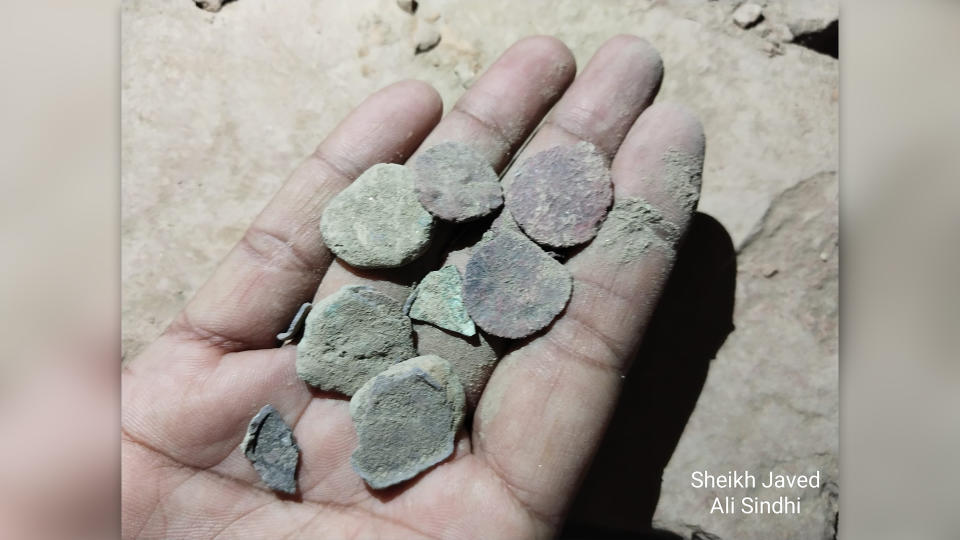
RELATED STORIES
—1st-century Buddha statue from ancient Egypt indicates Buddhists lived there in Roman times
—This may be one of the oldest Buddhist temples ever discovered
—Hoard of 100,000 centuries-old coins discovered in Japan
The stupa was abandoned in about A.D. 500., possibly after being damaged in an earthquake or because Buddhism had declined in influence in that area.
By that time, the Kushan Empire had fragmented into independent kingdoms, which were first conquered by the Sasanian Persians and later by invaders from the north who may have been associated with the Huns.

